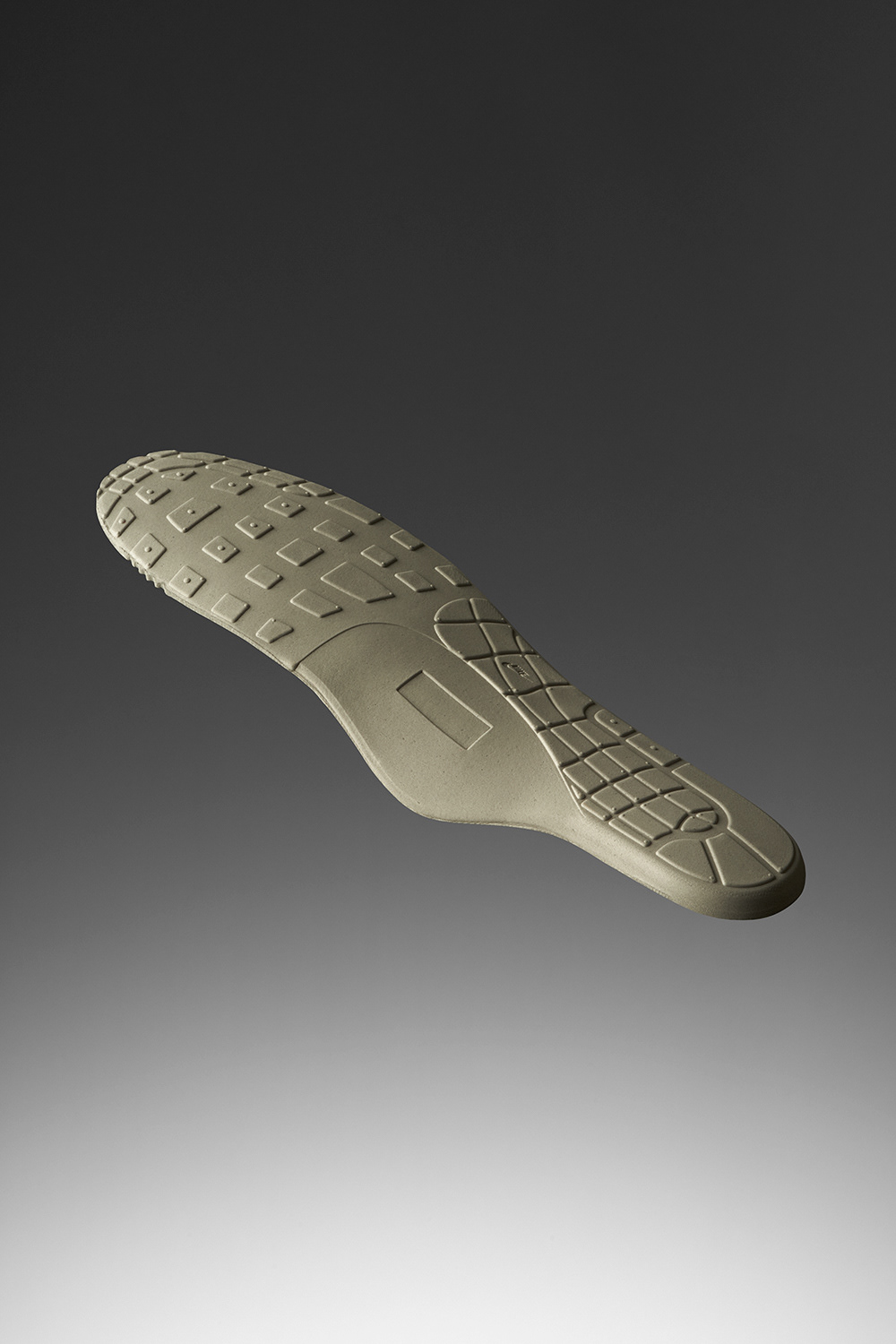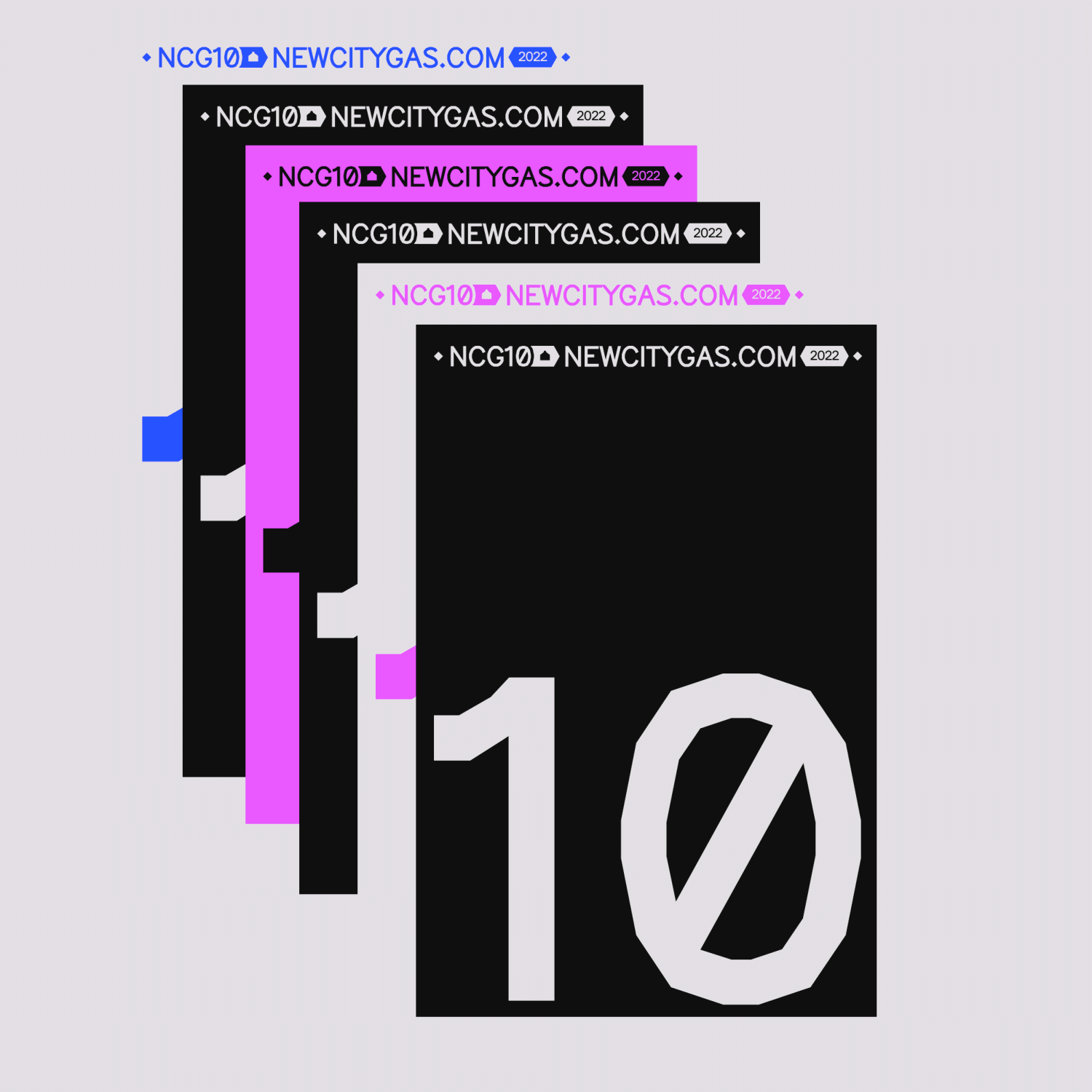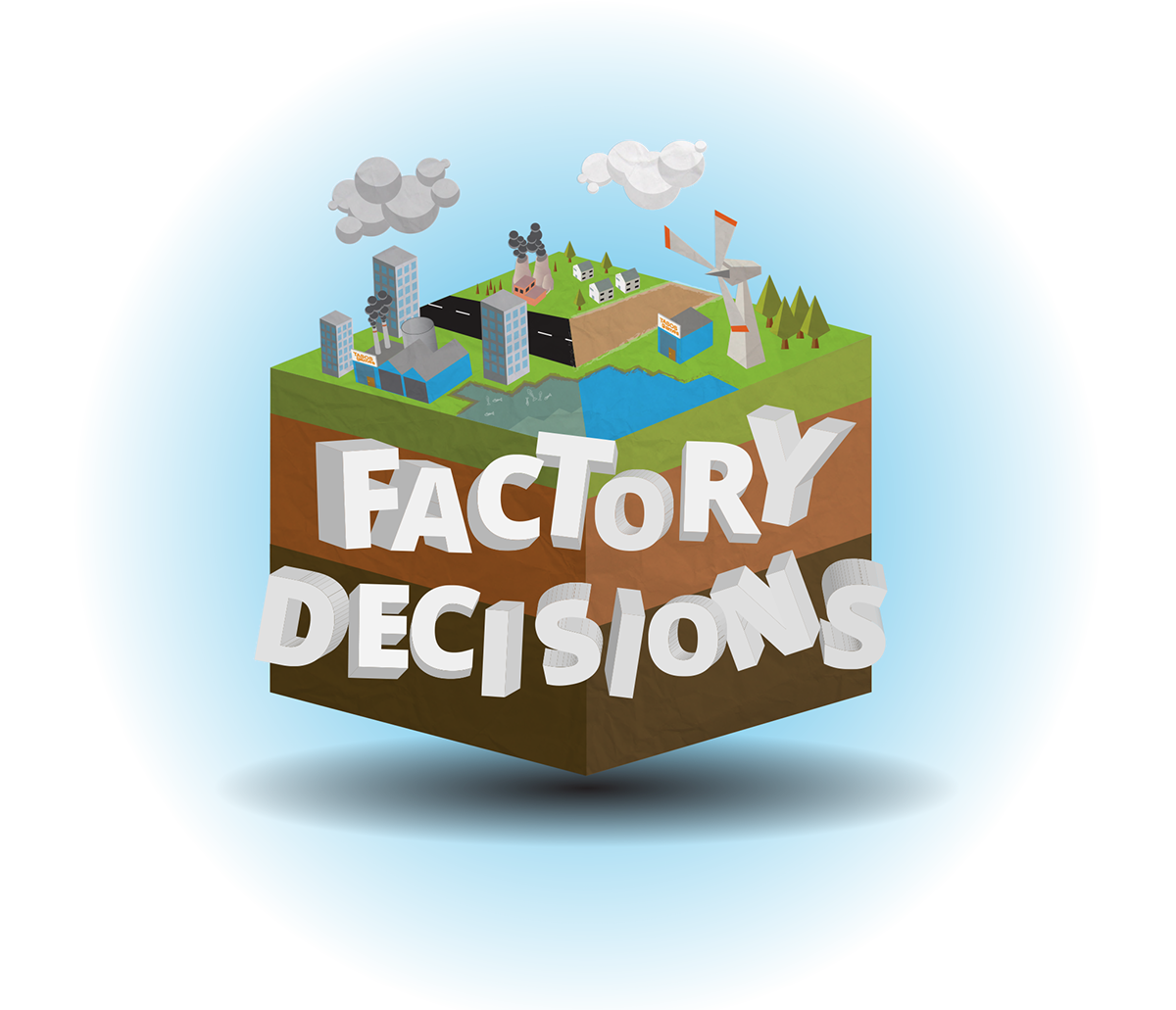
A project by:
Leontios Sakellis
Anastasios Thomaidis
Cyrill Averbeck
Project Description
"Factory Decisions" is a game prototype designed with a dual purpose: to entertain & to learn children via interactive means methods and the value of "Sustainable Development". The game had to fulfill five requirements that our team proposed since the very first brainstorming session:
◊ Fun to play
◊ Self motivating
◊ Influence on environment directly visible
◊ Familiarity through the several visual cues
◊ Transferability to real-life
Process
The usual interaction design approach was adopted and the team followed the following structure for the design process:
1. Brainstorming session
2. Mock-up Sketching
3. Proof of concept design (paper prototyping)
4. Mind mapping (structure of all the possible game elements)
Brainstorming & Conceptual Ideation
During the brainstorming process it was clear after the very first minutes that "Sustainable Development" is a huge area of knowledge, and thus we could create something bigger than we anticipated. Ideas were continuously produced and sketched, but something that was already visible was that the game had to be based around three basic factors that contribute to real-life systems and these were: Money, Fame, Ecology
These factors (mainly) are the ones that contribute to a company's experience, and almost every choice the company takes, it affects those three values... and not always positively! This was something that we really like to teach to the children that are going to play the game, because it is directly applicable to real-life scenarios, were every choice that we take, it has an effect, and that effect might give us some temporarily positive results, but in the long-term it might be proven more negative than the original stage.
Mock-ups
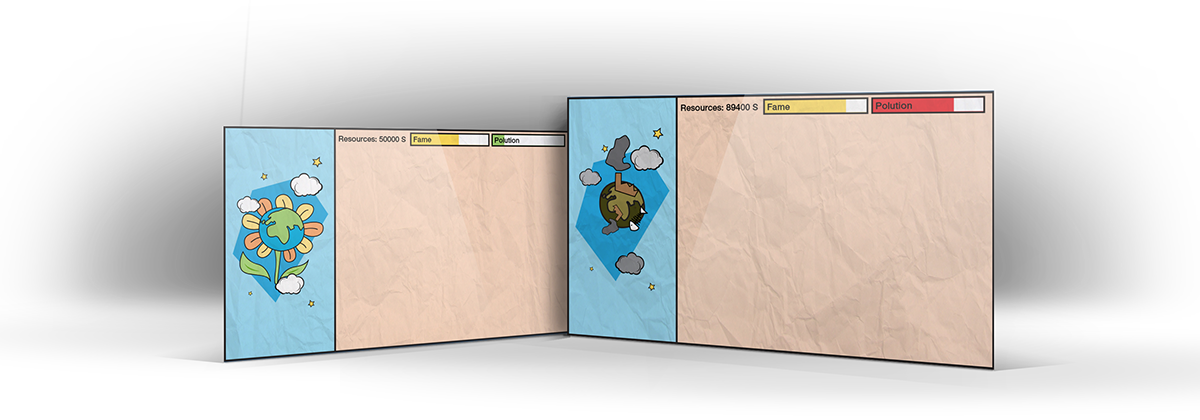
The first iteration had the UI presenting the earth on the left side, along with the town on the right side (not visible on the mockup). This layout was chosen because we wanted to show the effects of the pollution and degradation on a global scale, besides the town itself, but it was abandoned for the same reason, because after some quick sketching & prototyping we found out that it was making the game too abstract.
Then we moved into a digital mock-up for our first public presentation:
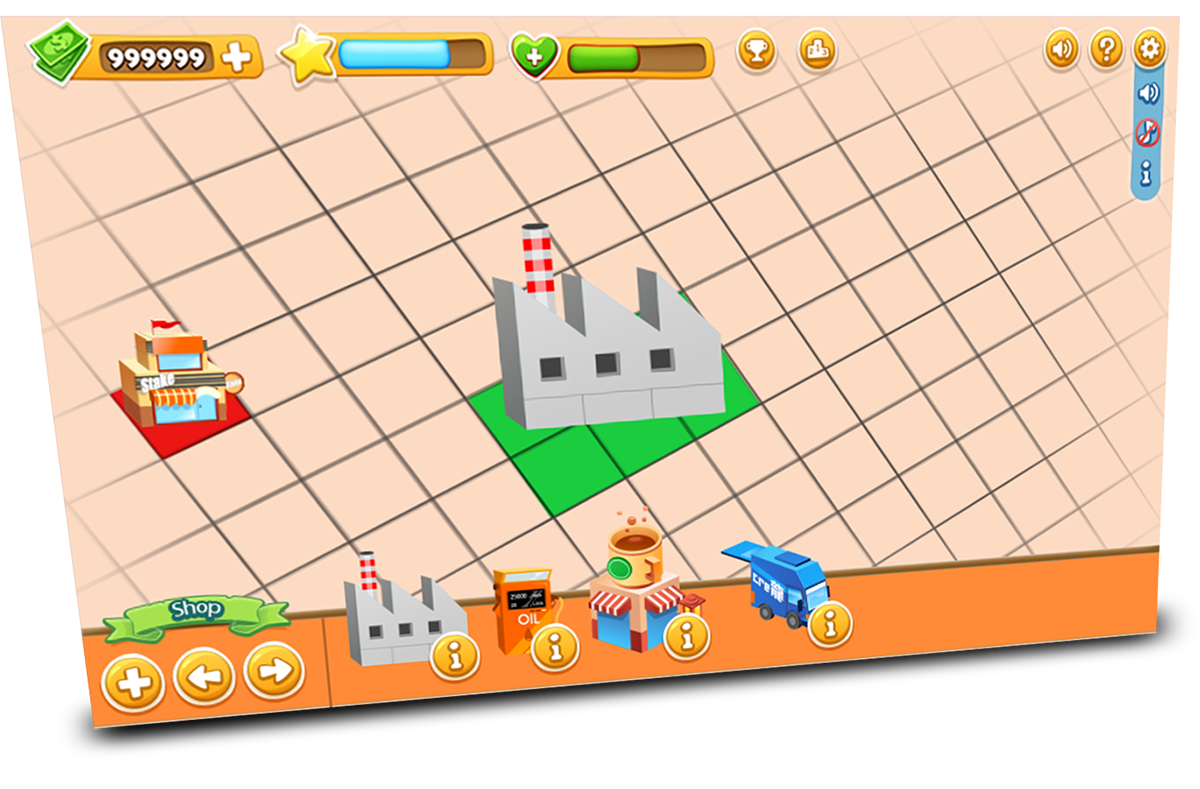
Paper Prototyping (proof of concept)
The next step was to prototype the gameplay mechanics in order to see if the concept was viable and could work as a game system. The quickest way to prototype a game (low fidelity prototype) is with paper prototyping, thus we quickly designed some of the game's elements (the most basic) and we printed them. Then we faked the actual gameplay mechanics as if we were playing it on a tablet.
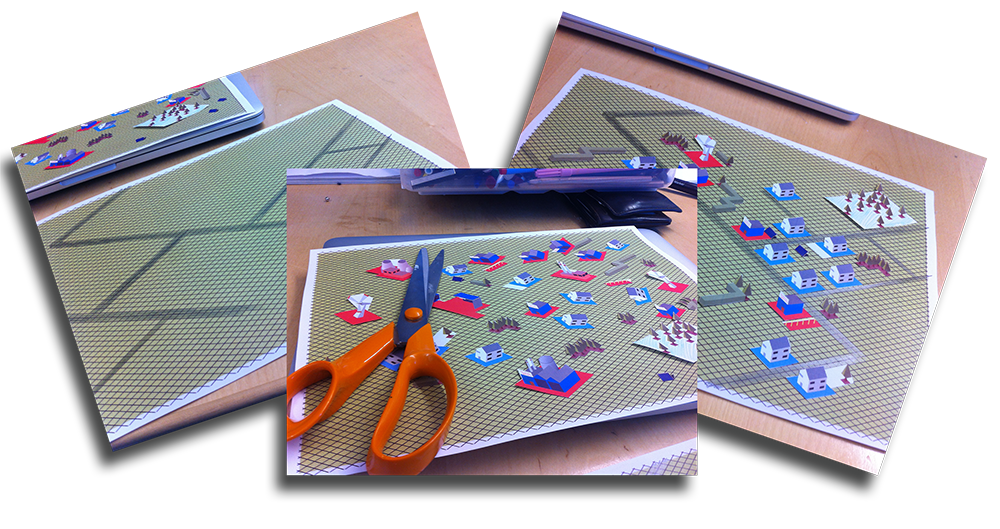
The concept was successful, with the game having the exact feeling we wanted it to have in our ideation phase, thus we it was time for us to consider what elements should we design for the final version!
Final Design
After all the iterations we proceeded with the actual design of all the game's elements, along with the GUI, which was designed based on the classic Real-Time Strategy games GUI layout, that has the structures on the bottom of the screen, and you simply click them and then click on the place you want them to be built. Since "Factory Decisions" is mostly focused on tablets, this mechanic is switched to drag n' drop from the bar to the place you want to build them.
The graphic theme is based on a popular smartphone game (Angry Birds) which enhances familiarity with the game's GUI.
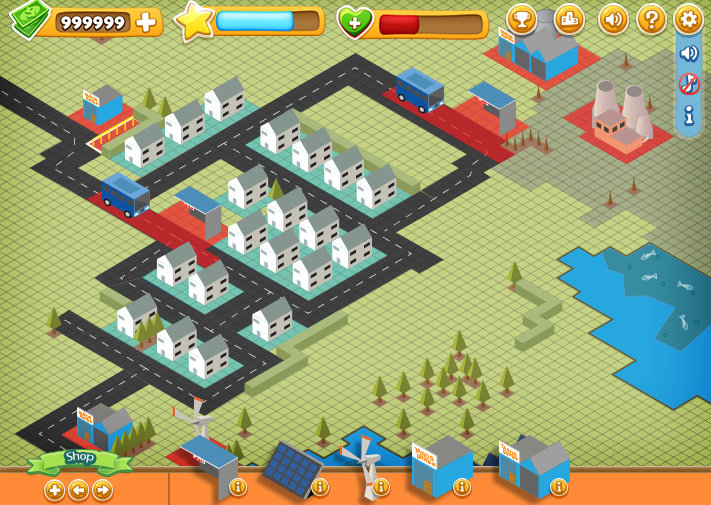
All the game's elements are isometric, in order to give a pseudo 3D effect, and to give the game a "cartoon" feeling.

Finally a video was created in Adobe After Effects that was used as a promo for the gameplay:
Thanks for watching and appreciating our work!

